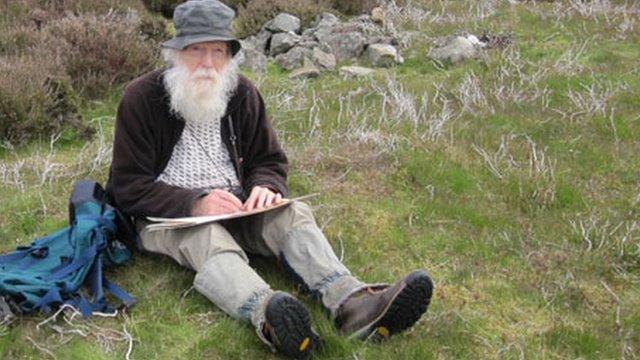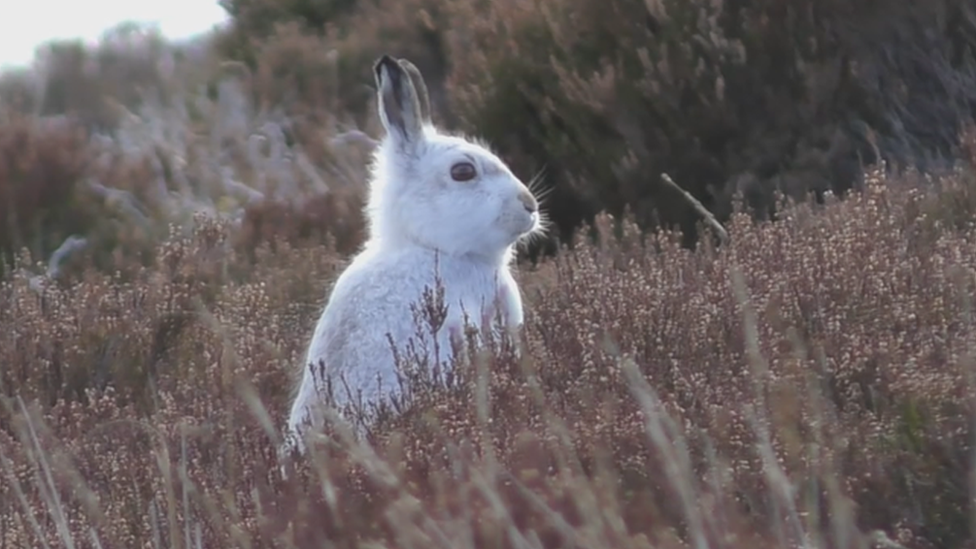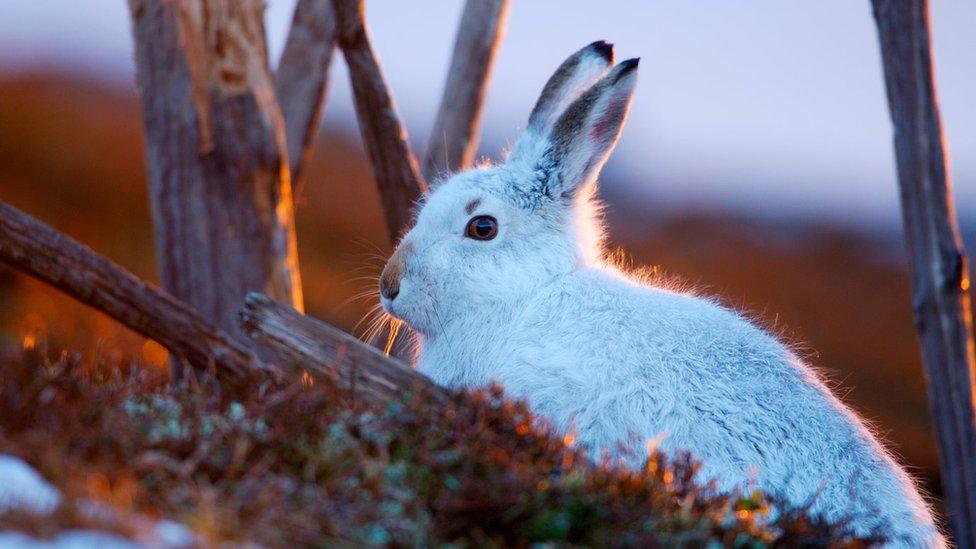Study suggests dramatic decline in mountain hares
- Published
Study suggests drastic decline in mountain hares
The number of mountain hares on moorland in the eastern Highlands is at less than 1% of their levels in the 1950s according to new research.
The study draws on data from one of Scotland's most renowned ecologists, Dr Adam Watson.
Conservation groups have called for an end to the "indiscriminate and ruthless" mountain hare culls.
Moorland managers say they find the report's conclusions "staggering" and at odds with their own experience.
The study, which has been published in the Journal of Applied Ecology, found that numbers fell annually by an average of almost 5% until 1999 when the decrease accelerated.
That has been attributed to a link between the animals and a tick-borne disease which affects grouse.
'Iconic mammals'
Dr Watson, dubbed Mr Cairngorms because of his years of research in the mountain area, said: "Having reached the age of 88 I am both delighted and relieved to see this paper published.
"Having counted mountain hares across the moors and high tops of the eastern Highlands since 1943, I find the decline in numbers of these beautiful animals both compelling and of great concern.
"We need the Scottish government and Scottish Natural Heritage to take action to help these iconic mammals of the hill - I hope they will listen to the voice of scientific research."

The study draws on records kept by Dr Adam Watson
The Scottish Moorland Group (SMG) insists culling only takes place when it is necessary and that between seven and 14% are shot.
It describes that figure as "eminently sustainable".
SMG director, Tim Baynes, told BBC Scotland: "We think {the study} has come to totally the wrong conclusions and I think it needs to be looked at very carefully.
"It's very much at odds with our members' experience. A lot of them are finding, and Scottish Natural Heritage acknowledge this as well, that the levels of mountain hares on managed grouse moors can be extremely high.
"It is simply not that they are disappearing. They are actually quite difficult to contain sometimes."
'Highest in Europe'
The group believes that a lack of control of mountain hares would see their numbers accelerating rapidly.
That, says, would lead to collateral damage in areas like tree planting as the population spreads outwards.
Duncan Orr Ewing, from RSPB Scotland, said: "The mountain hare is a keystone native species of the Scottish uplands. This authoritative research suggests that we should be very concerned about its population status in its former strongholds.
"We consider that large-scale population reduction culls are both illegal under EU law and unwarranted as a method for controlling grouse disease.
"Management of this species should now be more tightly controlled by Scottish Natural Heritage to safeguard mountain hare populations.
"We expect this subject to be given thorough consideration by the current independent grouse moor enquiry, which is looking at how grouse moors can be managed sustainably and within the law."
The Scottish Gamekeepers Association (SGA) said that in good breeding seasons numbers of hares were "very, very high, sometimes reaching densities of up to 200 hares per sq km".
A spokesman added: "Whilst on Scottish grouse moors hare numbers remain amongst the highest in Europe, we know there are campaigning wildlife charities, looking after hundreds of sites, with suitable habitat but no mountain hares at all.
"That revelation may shock and will become clearer to the public and government when the new counting methods are widely adopted, which is what the SGA is calling for."
- Published6 April 2018

- Published29 March 2018

- Published26 January 2018
